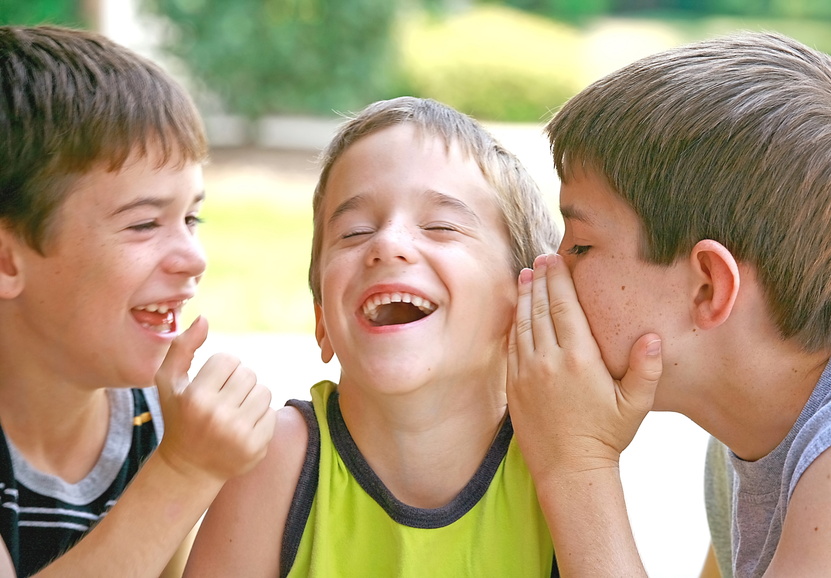Are you downloading the same old story or trying the unknown leap into the future letting go of everything you knew this far?
Here’s a great graph by Kelvy Bird shared via Otto Scharmer on LinkedIn:
Coach | Trainer | Speaker | Consultant
 While working and feeling a bit overwhelmed today with all sorts of things happening and different emotions passing by at the same time, suddenly a mail popped up in my inbox. I get quite a lot of newsletters and blog entries on a daily basis, hence am not reading them directly normally. This one though, caught my attention as the first line that I saw read the following:
While working and feeling a bit overwhelmed today with all sorts of things happening and different emotions passing by at the same time, suddenly a mail popped up in my inbox. I get quite a lot of newsletters and blog entries on a daily basis, hence am not reading them directly normally. This one though, caught my attention as the first line that I saw read the following:
“Recognize that you are feeling disturbed, overwhelmed, depressed or some other depleting or negative emotion”.
I thought, oh, yes, ok… I acknowledge that I am feeling kind of disturbed today, maybe I should do something against that and simply send some kindness to myself instead of judging and ruminating.
So I continued reading the newsletter and immediately felt better after some moments of stillness. As we all have our good and less good days, I wanted to share this little exercise with all of you. It is called “Soft Heart Tool” and comes from heartmath.org. Hopefully it will help you too!
Jenny
 In their book “Leading from the emerging future”, Otto Scharmer and Katrin Kaufer state the following:
In their book “Leading from the emerging future”, Otto Scharmer and Katrin Kaufer state the following:
“The primary battlefield of this century is with our Selves. It is a battle between the self and the Self: between our existing habituated self and our emerging future Self, both individually and collectively.”
According to their research and findings, the battle takes place between what they call absencing and presencing, meaning on one hand the downloading and replicating of habitual behaviours, holding onto the past and not opening our minds, hearts and will, thus being on autopilot; and on the other hand the heightened awareness, openness, letting go of the old and embracing/embodying the new to become more creative again.
To be honest, I for myself am in the middle of this battle currently… downloading and pretending not to listen to my gut feeling is simple, the “let us do as we always did, it’s so much easier” voice in my heat all too present. Very strongly though, I feel that this route is not for me, that there is something else to explore and some fantastic opportunities around the corner waiting to be seized and explored. Although it seems to be easy, letting go and swimming against what is known and what everybody does requires courage, discipline and a lot of mindfulness.
Have you also experienced moments of disruptions in your life? How did you react to these, did you switch on your autopilot or did you respond in a new, more creative way?
As we deal with the complexity of the 21st century, we need to change the way things are done, also the way leadership is approached. This change definitely starts with our Selves!
Have an excellent weekend,
Jenny
Last week, I gave you some theory and hints from speech and communication studies, that would help you navigate through the process of preparing what you will say when preparing a presentation; as promised, this week, I will introduce you to a mindful way to present and speak.
Let me begin with a quote from Artur Schnabel, an Austrian classical pianist 1882-1952:
“The notes I handle no better than many pianists. But the pauses between the notes–ah, that is where the art resides!”
Did you know that in the act of presenting, speaking publicly, teaching etc., there is significantly more occurring than the presentation and/or exchange of conceptual information? Behind and alongside the conceptual information we give out, a large body of non-verbal and paraverbal (tone of voice, how we say things) information is being exchanged.
Many of these processes are happening unconsciously, meaning that people involved don’t immediately notice that they are affected.
Example: You certainly know the feeling when you meet somebody for the first time and you somehow sense that you are not feeling comfortable.
Scientifically we would speak of:
Unconsciously mimicking the facial expressions, vocal expressions, postures, and instrumental behaviors of those around us, and thereby “catching” others’ emotions as a consequence of such facial, vocal, and postural mimicking.
And
A small circuit of cells in the premotor cortex and inferior parietal cortex which are activated both when we perform a certain action and when we observe someone else performing that same action. In other words, they collapse the distinction between seeing and doing.
Examples: You are watching a race, and you feel your own heart racing with excitement as the runners vie to cross the finish line first. Or you see a woman sniff some unfamiliar food and wrinkle her nose in disgust. Suddenly, your own stomach turns at the thought of the meal.
Thus: if you can manage to facilitate a field of belonging for your audience by connecting to them, you bring out the best in them and the best in yourself!
The trick is to learn to be with a group of any size one person at a time by connecting to your listener, allowing yourself to pause between sentences, breathe between thoughts and come to a full stop after big ideas.
You are in fact not screening your audience from left to right etc. as many people do but focusing on one person you feel is receptive to you, only some moments, and then move on to the next etc. Your audience will feel engaged and touched by what you have to say as you engage with them PERSONALLY.
Does this sound interesting and intriguing to you? Contact me to find out more and start to connect with your audiences in a mindful way TODAY!
Enjoy your summer (at least in this hemisphere) and hopefully some time off!
Jenny
Usually public speaking and presentation workshops start by teaching you a concrete technique or style to enable you to engage your audiences followed with some practice and recordings. The objective in these kinds of workshops is essentially to show you how to put a strong message together and deliver it effectively to your audience. While these techniques certainly help, there is one other aspect that is overlooked many times: your engagement and connection with the audience actually begins before you have even spoken your first word!
But before getting to a mindful way to present and speak in another post, let me give you some theory and hints from speech and communication studies, that will help you navigate through the process of preparing what you will say (in distinction to how you will be and how you will speak/interact)
One helpful and well-used method to organise presentations for maximum impact is called Monroe’s Motivated Sequence which was developed in the 1930s by Alan Monroe, a speech professor at Purdue University (Indiana, US).
He developed a five-step process designed to persuade an audience:
1. Calling attention to a problem
As part of the introduction: get the attention of your audience! Use storytelling, humor, a shocking statistic, or a rhetorical question – anything that will get the audience to sit up and take notice.
2. Demonstrating a need
Convince your audience there’s a problem. The audience must realise that what’s happening right now isn’t good enough – and it needs to change. You want them to become uncomfortable and restless, and ready to do the “something” that you recommend.
3. Satisfying that need
Introduce your solution. How will you solve the problem that your audience is ready to address? This is the main part of your presentation. It will vary significantly, depending on your purpose.
4. Visualizing the benefits
Describe what the situation will look like if the audience does nothing. The more realistic and detailed the vision, the better it will create the desire to do what you recommend. Your goal is to motivate the audience to agree with you and adopt similar behaviors, attitudes, and beliefs. Help them see what the results could be if they act the way you want them to. Make sure your vision is believable and realistic.
5. Calling for action
Your final job is to leave your audience with specific things they can do to solve the problem. You want them to take action now. Don’t overwhelm them with too much information or too many expectations, and be sure to give them options to increase their sense of ownership of the solution. This can be as simple as inviting them to have some refreshments as you walk around and answer questions.
Stay tuned for more and if you are already on holidays somewhere while reading this post: ENJOY the present moment!
Jenny
Tomorrow I will be giving myself a vacation. I will simply go offline and BE. How wonderful is that? No more thinking, no more running just three days sitting in silence and listening, mindfully to my body, my emotions, my breath.
Here’s sending you positive thoughts for the weekend ahead!
Next week I will be at Caux attending Initiative of Change’s international TIGE (trust and integrity in the global economy) conference. Stay tuned for great insights and more on mindful leadership!
Jenny
 Do you know what VUCA means? No? Well, not so long ago, I didn’t either, rest assured!
Do you know what VUCA means? No? Well, not so long ago, I didn’t either, rest assured!
Apparently, as Dan Goleman puts it: “The only certainty about tomorrow’s business reality is that it will be “VUCA”: volatile, uncertain, complex and ambiguous. As the world changes, so do the abilities leaders will need. Yet there is a specific skill set that will match the demands of such a reality.”
The common usage of the term “VUCA” already began in the 1990s and derives from military vocabulary. Subsequently, it has turned into a corporate buzzword used in strategic leadership and elsewhere.
One thing is for sure though: leaders need some sort of tools and training to counteract the effects of 24/7 connectivity, multitasking and information overload!
Excellent leadership is not only a win for an organization but also a win for employees and for the community as a whole. As our actions (positive and negative) as a leader affect others, being mindful about how we lead should be the way forward.
According Janice Marturano in her book “Finding the space to lead”, Mindful Leadership is:
Are you ready to embrace the business reality of the 21st century? Let me know if I can help you develop the skills to simply accept VUCA and take it as an opportunity rather than a threat!
Jenny
See on Scoop.it – Mindful Kids & Youth – Planting the seeds for mindful leadership
Did you know that how you teach is just as (if not more) important as what you teach? Why? Behind and alongside the conceptual information we teach, a large body of non-verbal information is being …
See on www.brainbreak.ch

Did you know that mindfulness can already be taught in schools? I wish this would have existed when I was still studying!
It is an excellent tool for kids and adolescents for example to:
The benefits are enormous and the earlier you begin with teaching these skills and techniques, the more they will be integrated into a kid’s repertoire so that he/she can draw on them when a difficult situation arises or simply to rest and pause for a moment.
I am convinced that in order to build up the leaders of tomorrow we have to start NOW with the next generation coming after us. They need to learn how to deal with ambiguity and with chaos as well as uncertainty. The world is complex and connected and in order to be “at your highest and best” while still being happy and healthy, making a living and dealing with many things at a time, we need some additional skills and tools.
I have thus decided to follow a training with an excellent school in the US and will also continue to become certified in teaching mindfulness for children and adolescents. What can be more rewarding than seeing kids take what they have learnt home and integrate it into their regular lives?
Let’s plant the seeds of mindfulness and heartfulness into young minds and bodies and connect feelings, emotions and thoughts… please follow me along on this exciting journey!
Have an excellent Sunday and week ahead!
Jenny
Related pages:
– http://www.academyformindfulteaching.com/
Did you know that whatever age you might have, there always is an inner child in you, in need of appreciation, affection, warmth and security? Every age that you have lived through is still in you: in your consciousness, unconsciousness, your cells…
It might therefore well be that suddenly you react in a certain way which might feel awkward in a given situation and which is not like the ‘you’ that you normally are when being around people.
A couple of weeks ago, I found myself in such a situation, where I suddenly felt very uncomfortable, starting with tingling in the stomach, not being able to concentrate anymore…. In order to get rid of that feeling, I thought I needed to do something, i.e. speak up and let the other people know that something was not alright. In the end, it made it worse as I was not able to voice my discomfort in a neutral and objective way (which I normally can do quite well); my counterpart reacted defensive and nobody was feeling any better.
Reflecting about this situation at a later stage, I identified that this deep discomfort was actually something that I carried around with me since quite some time, popping up at one moment or the other. I then decided to look inside and make ‘contact’ with the part of me that felt afraid and unwell asking what I could do to make it feel better. For me, meditation and self-reflection works best for becoming more self-aware and finding ways out of the ‘tunnel’; for you it might be some other technique. It could also be helpful to write down a question with your strong hand and then draw or write the answer with your other, more creative hand. You could be surprised at what comes out!
Being able to lead yourself in a way that allows for compassion, empathy and a feeling of comfort is the first step towards leading others. If you are not happy with who you are and what you are, not being able to rest within yourself and being kind, how do you want to lead others in an emotionally intelligent way?